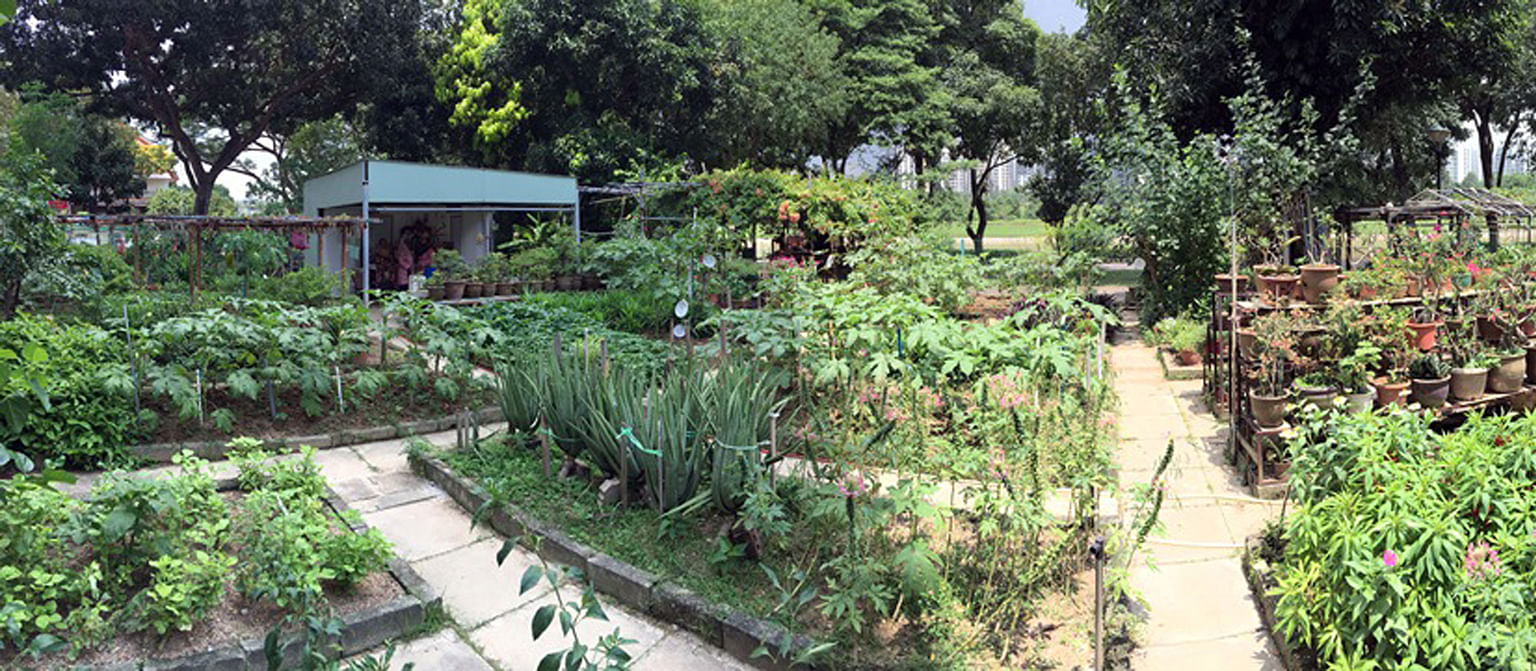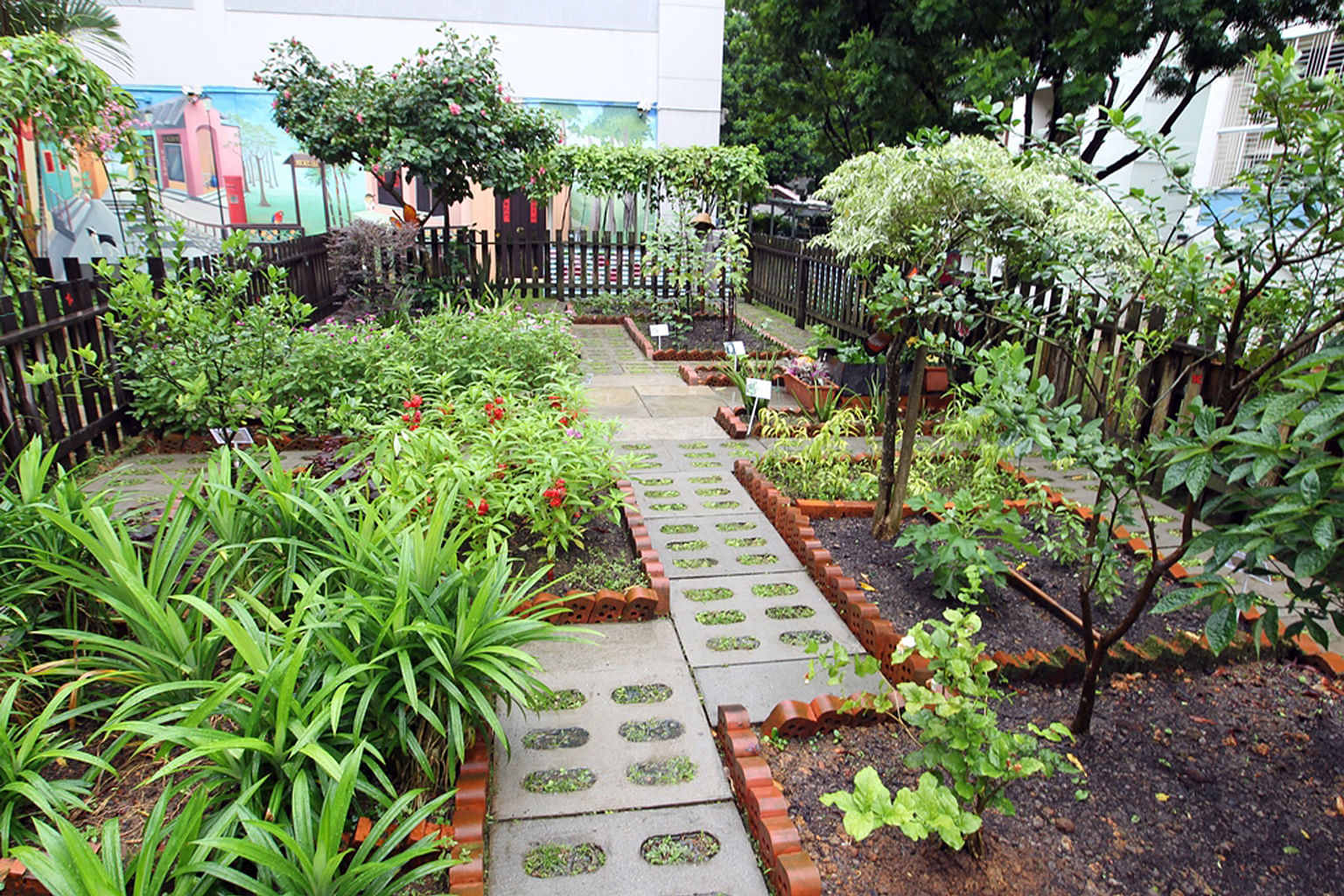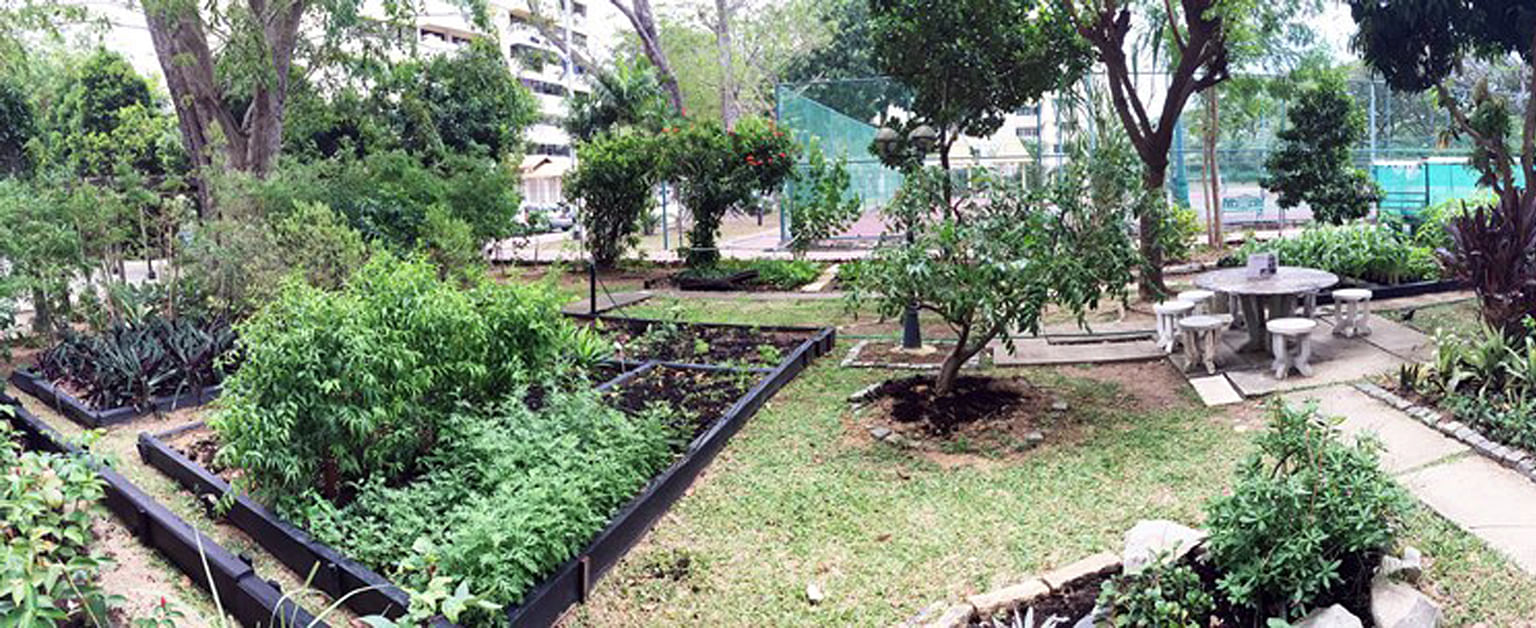Singapore may have the impressive Gardens by the Bay and a Unesco World Heritage Site in the Botanic Gardens.
But some of the finest gardens in the Garden City blossom right next to residences, where people study and worship.
These gardens were uncovered last month at the biennial Community In Bloom (CIB) Awards, started by the National Parks Board to encourage a gardening culture here.
The top prize, the Diamond award, went to 14 gardens in places such as public housing estates, schools, a condominium estate and a mosque.
The award came with a cash prize of $1,000, gardening equipment and tickets to the Singapore Garden Festival 2016, which takes place from July 23 to 31 at Gardens by the Bay.
This year, 436 gardens took part in the competition, up from 343 gardens in 2014. They competed in four categories: public housing estates, private housing estates, educational institutions and organisations.
The gardens were judged in three areas - community involvement, garden quality, and environment quality and biodiversity.
They were then awarded different achievement bands - bronze, silver, gold and platinum. To win the Diamond award, first introduced in 2014, the gardens must achieve three consecutive platinum bandings in past editions of the awards.
The Diamond awards and achievement bandings will be presented during the Singapore Garden Festival on July 31.
The Straits Times visits six of the Diamond award-winning gardens.
ZHONGHUA PRIMARY SCHOOL
Category: Educational institutions
There were different kinds of plants growing in the school garden, but because they were scattered all around, it was tough for the pupils at Zhonghua Primary School to study them in an organised fashion.
So at the end of last year, Madam Tan Lay Peng, 40, a teacher in charge of the school's environmental education - with help from a group of teachers and support staff - decided to overhaul the garden, which acts as an outdoor learning classroom for the pupils.
The school in Serangoon Avenue 4 spent $10,000 to revamp the garden, reorganising the plants in demarcated zones.
It had help from nature consultant Andrew Tay of Cicada Tree Eco-place, a non-government, non-profit organisation that promotes Singapore's natural and cultural heritage through environmental education and eco-living.
In the garden, which is slightly bigger than an Olympic-size swimming pool, there are herbs such as lemongrass, flowering plants and aquatic ones such as water hyacinth and duckweed.
New plants such as cacti and aloe veras were added and modifications were made to the pond.
A shallow drain was specially designed for the pond so that it holds less water and yet allows pupils to observe completely submerged plants and how the organisms in the water interact.
Madam Tan says: "The garden is a teaching tool. Our teachers can conduct different activities to inculcate in pupils the love of nature and increase their botany knowledge."

AYER RAJAH ZONE 1 RESIDENTS' COMMITTEE
Category: Public housing estates
Ayer Rajah residents keep the kampung spirit alive through gardening.
In 2001, Ms Lily Lek Siew Luan, chairman of the Ayer Rajah Zone 1 Residents' Committee, approached the town council for a plot of land to build a garden. The 65-year-old says: "Many senior residents here have nothing to do after they retire. So I opened this garden for them to work on during their free time."
Ms Lek, who received a Public Service Medal last year, adds that residents who want to work in the 475 sq m garden have to pay $1 every month to buy gardening essentials such as soil and fertilisers. There are 35 members - the youngest is aged 55 and the oldest, 78.
She says: "I used to live in a kampung when I was young, as did many of the elderly residents here, so putting this garden together is our way of reminiscing about our past.
"We love being able to grow our own fruit and vegetables, walking in the garden in our bare feet and being involved in the harvesting process. It's laborious, but we feel satisfied when we see our harvests."
Residents who are not members of the garden are welcome to share the harvests. Ms Lek says: "Whenever a resident needs something, such as herbs, we are happy to give it to him."

WOODLANDS COMMUNITY CLUB
Category: Organisations
Over five years, Ms Doris Yuen, 57, spent $400 to $500 on air plants, which she then donated to the Woodlands Community Club for its garden in 2011.
So when the plants were stolen two years later, the chairman of the senior citizens' executive committee at the club was naturally upset.
"I tried to comfort myself by saying that maybe the people who took the plants loved them more than I did," she says.
The garden, created in November 2009, has since blossomed and is now home to plants such as Japanese roses, Indian shot, passionfruit, lovegrass and two lychee trees.
Recipes are written on the tags with the plant names.
Residents who take herbs from the garden for their own use usually replace them with their own seeds.
The garden, which Ms Yuen says is about 5m by 6m, is tended by residents in the area who are aged 57 to 85.
Late last year, the same residents also spent two weeks - working from 7am to 5pm daily - painting murals on the walls near the garden.

AL-MUKMININ MOSQUE
Category: Organisations
When the 30 sq m garden was built in 2010, many members of the Al-Mukminin Mosque in Jurong East Street 21 offered to donate their own plants.
Their generosity, however, put mosque manager Mohd Fairus Abd Manaf, 37, in a spot.
He explains that everyone was giving recommendations on what plants should be included in the $5,000 garden, but he had to make his decisions based on what suited the look of the garden.
Now, the plot has various plants such as aloe vera, bougainvillaea, orchids and five fruit trees.
The tranquil garden not only attracts many members to take a rest there, but it is also a popular photography spot for couples during their marriage solemnisation.
When the mosque receives visitors from schools, the students are also often at the garden snapping pictures.
Mr Mohd Fairus says: "The garden is a good place for people to relax and also a space for the children to learn."


